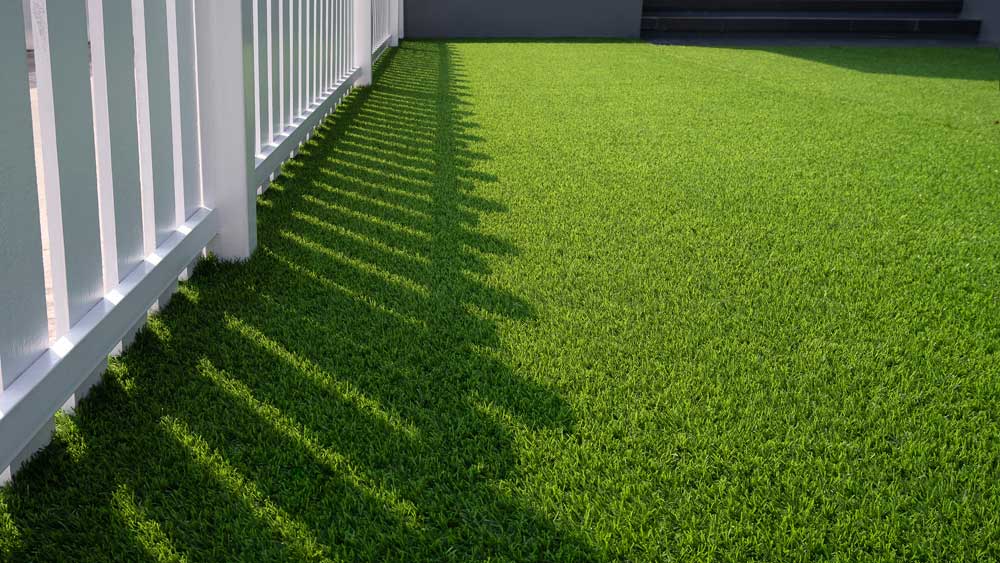
You take pride in your lawn, but lately, it’s been looking a little lackluster. Weeds are cropping up, pests are making themselves at home, and those once-lush blades are looking a bit wilted. You’ve tried to tackle the issues on your own, but it’s clear that you need some expert help. That’s where professional services come in – they can identify the root causes of your lawn’s problems and provide customized solutions to get your outdoor space back to its former glory.
Weeds: The Uninvited Guests
Behind every lush, green fence staining lies a silent menace: weeds.
They’re sneaky and opportunistic, taking advantage of any weakness in your lawn care routine. You mightn’t notice them at first, but before you know it, they’ve taken over, stealing water, nutrients, and sunlight.
Weeds can produce thousands of seeds, spreading quickly and efficiently. They can even grow in the smallest cracks and crevices, making them almost impossible to eradicate completely.
You try to pull them out, but they just keep coming back. It’s frustrating and time-consuming.
You’ve tried using weed killers, but they can harm your lawn, pets, and even the environment. It’s a vicious cycle, and you’re not sure what to do.
You’ve considered hiring a professional, but you’re not sure if it’s worth it.
The truth is, weeds are a persistent problem that requires consistent effort and attention. If you don’t stay on top of them, they’ll take over, leaving your lawn looking unhealthy and uninviting.
Lawn Pests: More Than Meets Eye
You’ve finally got your weed problem under control, but now you’re noticing other issues with your lawn.
As you take a closer look, you’re realizing that pests might be the culprits. Lawn pests can be sneaky, and it’s easy to overlook them.
But don’t be fooled – they can cause significant damage to your lawn.
White grubs, chinch bugs, and billbugs are common lawn pests.
These pests can chew on grass roots and blades, leaving your grass weakened and vulnerable to other issues.
You might notice circular patches of dead grass, or grass that’s easy to pull up.
If you’re not addressing the pest problem, you’ll likely see more widespread damage.
Lawn pests can also attract other unwanted visitors, such as moles and birds, which can further damage your lawn.
Professional lawn services can identify the type of pest you’re dealing with and provide targeted solutions to eliminate the problem.
With their help, you can restore your lawn to its healthy, thriving state.
Nutrient Deficiencies Exposed
Three key nutrients – nitrogen, phosphorus, and potassium – are essential for a healthy lawn. You know your lawn needs these nutrients, but do you know if it’s getting enough?
Nitrogen deficiency is common, especially in lawns with heavy foot traffic. You’ll notice it when your lawn turns yellow or light green, and grass growth slows down.
Phosphorus deficiency, on the other hand, affects root development, making your lawn more susceptible to disease. You might notice stunted growth, thinning, or a purplish tint.
Potassium deficiency is less common, but it can cause leaf scorch, weakening your lawn further.
If you’re not sure what your soil lacks, it’s best to consult a professional service. They’ll analyze your soil and identify the nutrient deficiencies.
Based on their findings, they’ll create a customized plan to address these deficiencies, ensuring your lawn gets the right amount of nutrients it needs.
With the right nutrients, your lawn will regain its vibrancy, and you’ll be enjoying a lush, and thriving outdoor space once again.
Common Lawn Diseases Uncovered
Vulnerability creeps in when conditions are ripe, and your lawn becomes a breeding ground for unwanted guests.
Lawn diseases can quickly spread, causing unsightly patches, discoloration, and even death. You might notice powdery mildew, a white, dusty coating on grass blades, or rust, which appears as yellow or orange spores.
Leaf spot diseases, like brown patch or dollar spot, can leave circular patches of dead grass.
Fungal diseases thrive in moist environments, making it essential to maintain good air circulation and reduce watering.
You should also remove debris, like fallen leaves, to prevent fungal spores from spreading. Proper mowing and fertilization help prevent disease outbreaks.
If you do notice disease symptoms, don’t hesitate to contact a lawn care professional.
They can diagnose the issue and provide targeted treatments to restore your lawn’s health.
Uneven Growth Patterns Explained
As you inspect your lawn, you notice uneven growth patterns – some areas are lush and green, while others appear sparse and struggling.
This unevenness can be frustrating, especially if you’re not sure what’s causing it.
There are several reasons why your lawn may be growing unevenly. One common culprit is soil compaction, which occurs when the soil is packed down too tightly, making it difficult for air, water, and nutrients to reach the roots.
Another possible cause is inadequate sunlight or poor drainage, which can lead to weak and struggling grass.
Additionally, improper mowing, pests, and diseases can also contribute to uneven growth patterns.
By identifying the underlying cause, you can take steps to address the issue and promote healthy, even growth.
If you’re unsure of what’s causing the uneven growth or how to fix it, consider consulting a lawn care professional who can assess your lawn and provide personalized guidance and solutions.
Conclusion
You’ve invested time and money into your lawn, but still, it’s not thriving. Don’t let common lawn problems get the best of you. By understanding weeds, pests, nutrient deficiencies, diseases, and uneven growth patterns, you can take the first step towards a lush, green lawn. Now, it’s time to call in the professionals. With their expertise, your lawn will receive the care it needs, and you’ll be able to enjoy your outdoor space once again.



